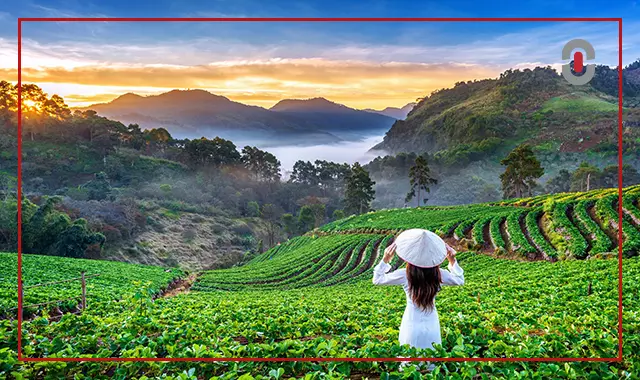AI Overview
| Category | Summary |
| Topic | English to Vietnamese Translation – Common Pitfalls and Cultural Adaptation |
| Purpose | To help businesses avoid critical mistakes when localizing content into Vietnamese by understanding linguistic, cultural, and regional nuances |
| Key Insight | Effective Vietnamese localization goes far beyond literal translation—success depends on cultural sensitivity, formality, emotional tone, and collaboration with native-speaking professionals |
| Best Use Case | For companies preparing marketing materials, websites, or legal content for Vietnamese markets, especially those entering Vietnam for the first time |
| Risk Warning | Relying on machine translation, ignoring formality levels, or using inconsistent terminology can damage brand trust and local engagement |
| Pro Tip | Always test your content through local focus groups or in-market reviews to validate tone, clarity, and emotional appeal before launching |
Do you know that Vietnamese started out as a strictly spoken language? When it first became a written language, Vietnamese used an edited version of Chinese characters. The language was Latinized during French colonization. This Latinized script, known as quốc ngữ, eventually replaced the earlier logographic system called chữ Nôm. Today, quốc ngữ is the official writing system of Vietnam and plays a central role in education, literature, and everyday communication.
Introduction
As global markets become increasingly interconnected, expanding into new regions requires clear, culturally sensitive communication. For businesses targeting Vietnam, a country with over 100 million people and a fast-growing economy, effective localization is essential. However, translating business content from English to Vietnamese isn’t as simple as converting words from one language to another. It involves adapting meaning, tone, and cultural references in a way that resonates with local audiences. Unfortunately, many companies underestimate this process and fall into common traps—ranging from awkward literal translations to cultural faux pas that alienate rather than attract customers. Poor localization can dilute your brand message, confuse your audience, or worse, damage your reputation in a new market.
Understanding Localization vs. Translation
Before delving into the common mistakes, it’s important to differentiate between translation and localization. Translation involves converting text from one language to another, focusing on linguistic accuracy. Localization, on the other hand, adapts content to a specific culture, considering not just language but also values, social norms, and market expectations.
For instance, translating the English phrase “Get your tickets before they’re gone!” literally might confuse a Vietnamese audience if the urgency or event culture doesn’t align. A localized version might adapt the call-to-action to fit local behaviors or festivals, such as “Nhanh tay đặt vé – Số lượng có hạn cho sự kiện cuối tuần này!” (Act fast – Limited tickets for this weekend’s event!).
Common Mistakes in English to Vietnamese Business Localization
1. Overly Literal Translations
One of the most frequent pitfalls is translating content word-for-word. While literal translation may preserve the original structure, it often results in awkward or unnatural Vietnamese that fails to convey the intended message. For example:
- English: “Think outside the box”
- Literal Vietnamese: “Nghĩ bên ngoài cái hộp”
- Localized Vietnamese: “Suy nghĩ sáng tạo” or “Đổi mới tư duy”
Idiomatic expressions and metaphors in English rarely translate directly into Vietnamese. Skilled translators must capture the essence of the message, not just its form.
2. Neglecting Cultural Nuances
Vietnamese culture is deeply influenced by Confucian values—hierarchy, respect, and social harmony are highly regarded. Content that appears too casual, aggressive, or self-promotional (which might work in Western markets) can feel inappropriate or even offensive in Vietnam.
For example:
- English tagline: “Be a boss—take control of your future.”
- Direct translation: “Hãy là sếp – kiểm soát tương lai của bạn.”
- Localized: “Làm chủ tương lai của bạn với sự tự tin và bản lĩnh.”
The revised version avoids the boastful tone and emphasizes confidence and capability, values that resonate more positively in Vietnamese business culture.
3. Using Incorrect Levels of Formality
Vietnamese is a language that relies heavily on context and social relationships to determine how people are addressed. Unlike English, where “you” is universal, Vietnamese uses various forms—like “bạn,” “quý khách,” “ông,” “chị,” depending on age, gender, and status.
For instance:
- Talking to a customer over 50 years old? Use “ông” or “bà”.
- Addressing a female professional in her 30s? “Chị” is more appropriate.
Misusing these forms—even unintentionally—can signal disrespect or lack of professionalism. For businesses, this is particularly risky in customer service, email communications, and in-person interactions.
4. Ignoring Regional Dialects and Preferences
Vietnamese has three major dialect groups: Northern (Hanoi), Central (Hue), and Southern (Ho Chi Minh City). While official documents and education use the Northern dialect, Southern Vietnamese is more widely spoken in commerce and everyday life, especially in business hubs like Ho Chi Minh City.
Key differences include vocabulary, pronunciation, and expressions. For example:
- “Rất ngon” (very delicious) is more typical in the North.
- “Ngon quá trời!” is a more natural Southern variant, commonly used in ads or social content.
5. Inconsistent or Inaccurate Terminology
Especially in technical, legal, or industry-specific content, consistency in terminology is critical. Using different Vietnamese equivalents for the same English term across multiple documents can confuse readers or raise questions about quality.
Consider:
- “Digital transformation” → “chuyển đổi số”
- But it also shows up as “thay đổi kỹ thuật số” or “đổi mới số” in the same document
Such inconsistencies dilute clarity and brand trust. A centralized glossary and translation memory software can help your teams stay aligned.
6. Not Adapting Visual and Format Elements
Effective localization also includes adapting non-text elements, such as:

- Dates: Vietnam uses DD/MM/YYYY, not MM/DD/YYYY.
- Currency: Use VND (₫) and avoid dollar signs unless specifically referring to USD.
- Units: Metric system is standard. Replace inches, pounds, and Fahrenheit with centimeters, kilograms, and Celsius.
- Colors and Symbols: Red is associated with luck and celebration, while white may symbolize mourning. Design choices should reflect local color psychology.
Even subtle details like text alignment (justified Vietnamese paragraphs tend to read more formally) can impact readability and professionalism.
7. Overreliance on Machine Translation
AI-powered tools like Google Translate or DeepL can be useful for initial drafts, but they often lack the nuance required for accurate Vietnamese localization. Without cultural or linguistic review, machine translations can lead to embarrassing or misleading content.
Example:
- English: “This product is free of charge.”
- Machine-translated Vietnamese: “Sản phẩm này miễn phí.”
- Better localized version: “Sản phẩm này được cung cấp hoàn toàn miễn phí – không tốn thêm chi phí nào.”
The latter avoids ambiguity and adds persuasive, marketing-friendly language.
Machine translation should always be paired with human editing by native-speaking professionals.
8. Missing the Emotional and Cultural Tone
Beyond words, great localization captures local emotions and aspirations. Vietnamese audiences often respond well to messaging that emphasizes family, perseverance, community pride, and optimism.
A campaign like:
- English: “Your success, your way.”
- Direct translation: “Thành công của bạn, theo cách của bạn.”
- Localized: “Thành công bền vững – theo con đường bạn chọn.” This version reinforces sustainability (“bền vững”) and personal growth, aligning with common local values.
When in doubt, test your messages through local focus groups or brand perception studies.
Best Practices for Success
✔ Hire Native Vietnamese Linguists
Ensure your translators are fluent in both languages and culturally attuned. Domain-specific experience (e.g., finance, law, SaaS) is a plus.
✔ Maintain a Style Guide
Define tone, formality level, brand voice, and preferred terms early on. Update it as your content evolves.
✔ Conduct Multistage QA
Include linguistic, functional, and cultural reviews. Use focus groups for critical campaigns or brand relaunches.
✔ Collaborate With Local Marketing Teams
Localization isn’t just about language—it’s about relevance. Involve regional teams in content adaptation and strategy planning.
1-StopAsia offers native-speaking linguists, in-market cultural expertise, and scalable solutions tailored to your business needs. From marketing campaigns to legal documentation, we help global brands communicate effectively with Vietnamese audiences.
Conclusion
Translating business content from English to Vietnamese is both a linguistic and cultural endeavor. Common mistakes—like literal translation, improper tone, and ignoring regional context—can weaken your message and limit market penetration. But with the right strategies, tools, and talent, localization becomes a powerful asset.
Vietnam’s economic landscape is lively, youthful, and full of opportunity. By approaching localization thoughtfully and respectfully, businesses build trust, spark engagement, and lay the foundation for long-term success in one of Asia’s most dynamic markets.
